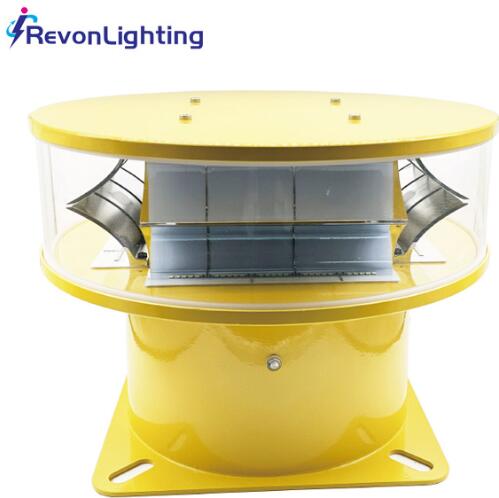Posted: 2024-05-11
Aviation obstruction lights are essential safety devices that play a crucial role in maintaining aviation safety by alerting pilots to the presence of potential obstacles in their flight path. These lights are installed on tall structures such as buildings, towers, and antennas, and are designed to enhance visibility and prevent accidents. In this article, we will explore the importance of aviation obstruction lights, their different types, and the regulations governing their usage.
The primary purpose of aviation obstruction lights is to make structures more visible to pilots, especially during low visibility conditions such as fog or at night. These lights emit a bright, highly visible light that can be seen from a distance, allowing pilots to identify potential obstacles in their flight path. By providing this critical visual cue, aviation obstruction lights help pilots navigate safely around structures, preventing accidents and ensuring the safety of both the aircraft and the people on the ground.
There are several types of aviation obstruction lights available, each designed for specific applications and visibility requirements. The most commonly used type is the red obstruction light, which is employed on structures taller than a certain height specified by aviation regulations. These lights are typically flashing or steady-burning and are installed at regular intervals to ensure continuous visibility.

In addition to red obstruction lights, there are also white strobe lights used for aviation warning. These lights emit intense, high-frequency flashes, making them highly visible even in poor weather conditions. White strobe lights are often utilized on tall structures near airports, heliports, or other areas with heavy air traffic, where they provide an additional level of warning to pilots.
Furthermore, there are also dual lighting systems that combine red obstruction lights with white strobe lights. These systems offer enhanced visibility and are commonly used on structures that require maximum recognition, such as tall buildings or communication towers located in busy airspace. The combination of red and white lights ensures that the structure stands out both during the day and at night.
| 1 | low intensity aviation obstruction light |
| 2 | medium intensity aviation obstruction light |
| 3 | high intensity aviation obstruction light |
The usage of aviation obstruction lights is governed by national and international regulations to maintain uniform standards and ensure aviation safety. For instance, the International Civil Aviation Organization (ICAO) sets guidelines for the marking and lighting of structures. These guidelines specify the type, intensity, and placement of lights based on the height and location of the structure. Similarly, many countries have their own aviation authorities that establish regulations to comply with ICAO standards.
Regular maintenance and periodic inspections are crucial for the effective operation of aviation obstruction lights. It is essential to ensure that the lights are functioning correctly, emitting the appropriate level of brightness, and aligned properly. Regular maintenance not only ensures the visibility of the lights but also helps prevent false alarms or malfunctioning, which could lead to confusion for pilots.
In recent years, technological advancements have led to the development of more energy-efficient and environmentally-friendly aviation obstruction lights. LED lights, for example, have become increasingly popular due to their low power consumption and long lifespan. These lights offer significant cost savings and reduce the environmental impact associated with traditional lighting systems.
In conclusion, aviation obstruction lights are vital safety devices that help prevent accidents and ensure the safety of aircraft and structures. By providing enhanced visibility to pilots, these lights enable safe navigation around tall structures, especially during low visibility conditions. The different types of lights, such as red obstruction lights, white strobe lights, and dual lighting systems, offer a range of options to meet specific visibility requirements. With proper installation, regular maintenance, and compliance with aviation regulations, aviation obstruction lights continue to play a crucial role in maintaining aviation safety and preventing potential collisions.